Do It Yourself
Fishing Basics: What Equipment To Start With
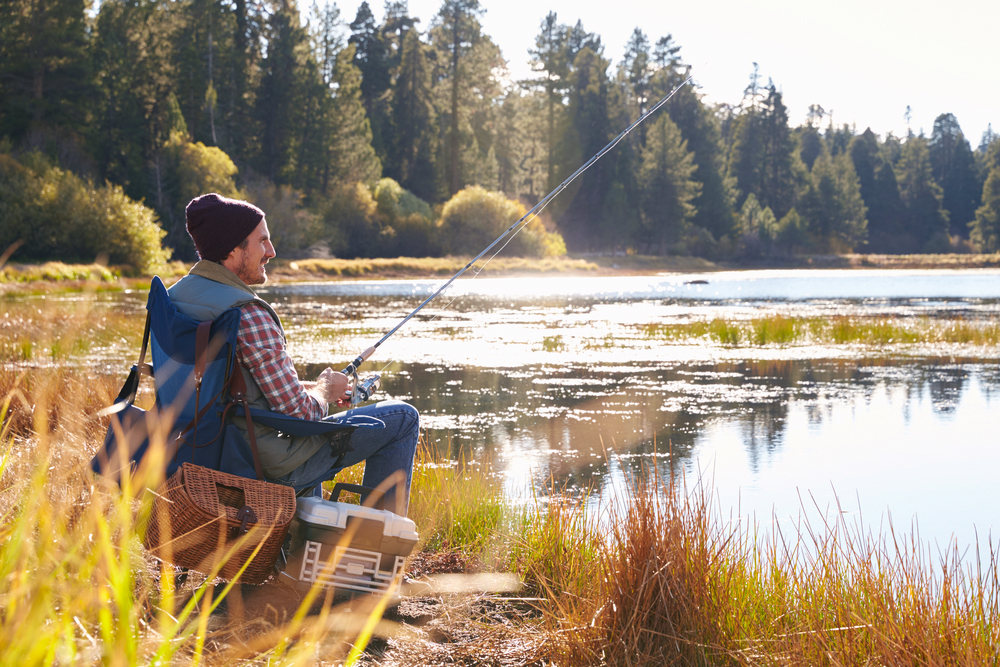
In this article, we will cover the basics on how to fish successfully to provide food for you and your family.
Fishing Basics for New Anglers
Finding food in a survival scenario is one of the most challenging tasks you will face. While you can last three weeks without food, hunger can drastically affect your survival long before you die of starvation.
As you go without food, the body starts to literally eat itself to provide you with energy. This starts with the body burning excess fat.
Initially, you will notice weakness, headaches, and stomach pains. Then, your body starts to burn muscle and organ tissue. This causes confusion, disorientation, body pains, severe depression, and a lack of coordination.
All of these issues make other survival tasks very difficult.
The issue is not just finding food but finding the right food. You need a good amount of fat and protein to keep going, and fish can provide this.
If you have the right knowledge and the right equipment, fishing can be the best way to provide a consistent food source with fats and protein. However, it is not as simple as just getting a line wet.
You need to know the pros and cons of different types of fishing as well as how to fish with different equipment.
Equipment Types
There are several different types of rigs that you can use for catching fish. Each one has different advantages and disadvantages.
- Fly Rod and Reel
Fly fishing is a unique type of fishing that involves a long pole and a unique casting process. Unlike other types of fishing, you use the momentum of the line to lengthen your cast by whipping the line back and forth.
You can fly fish from the shore, while wading, or from a boat. However, the casting process requires that you have clear space behind you so the line does not get tangled in brush or tree branches.
- Spinning Reels
These reels are paired with different types of rods. The reel uniquely hangs beneath the rod with the spool parallel to the rod allowing the angler to hold the line with their finger as they cast. Spinning reels require more practice than other types of reels as they are prone to tangles in the line.
- Spin Casting Reels
Again, these reels are paired with lots of different lengths of rods. They are essentially spinning reels with a cover over the spool.
The reel sits on top of the rod, but the spool is still running parallel to it. You simply press and release a button on the reel when you cast to release the line. For most people, this is the easiest reel to learn.
- Bait Cast Reels
These reels are different in several ways. They sit on top of the rod-like spin casting reels, but instead of the spool being parallel to the rod it runs perpendicular.
For this to work, the reel has to spin freely while you cast instead of remaining stationary like other reels. You press a release button on the reel to cast.
However, the spool will keep going after the cast if you do not stop it. It takes some practice.
Now that you have the general idea of the equipment you can use, let’s go into more detail with each one.
1. Fly Fishing
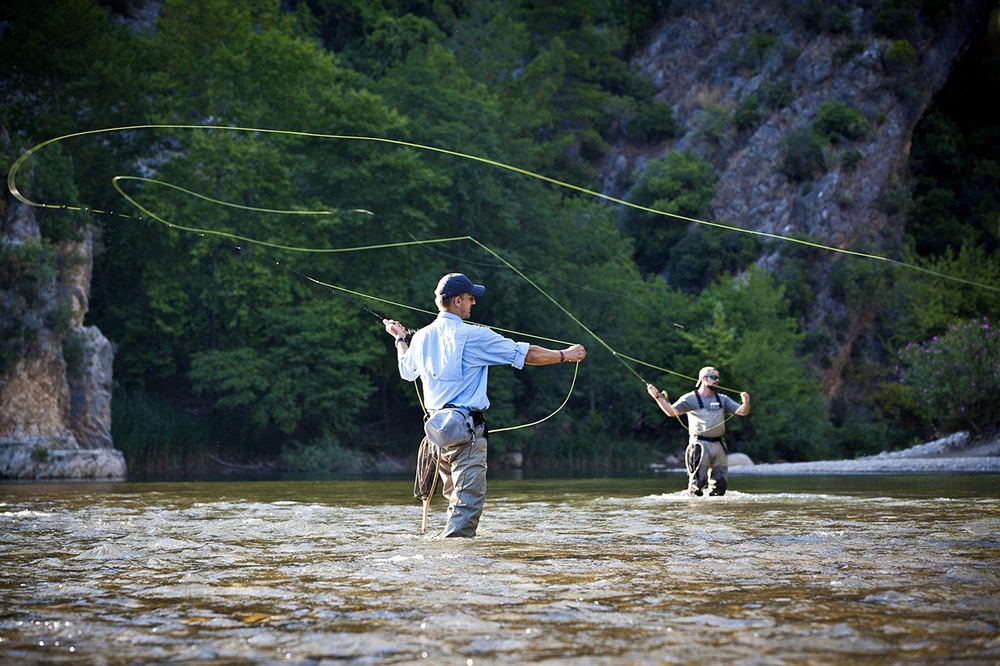
I started fly fishing as a teenager and really fell in love with the process. While it may not be the easiest way to fish, it is a lot of fun.
The process of laying that line out for the perfect cast takes some practice, but it is very rewarding. This is often the method of choice for trout or smallmouth bass.
Unlike other types of fishing rigs, your line will actually consist of several lines of different thicknesses tied together.
This may seem strange, but it accomplishes two things. It gives your line the weight that it needs to get distance on your cast. It also gives you an almost invisible section of the line running up to the end.
You will start with the leader, which is the thickest part of your line. This will be the majority of what you have spooled up on your reel. It is often yellow or another color easy to see on the water so you can tell where your line is landing.
Next, you will have your leader. It is similar to a ‘normal’ fishing line in that it is thinner and typically clear. The final section running up to your fly is the tippet. The last few feet are designed to be virtually invisible and are just strong enough to handle the fish.
Flies are one of the most interesting parts of fly fishing. These are the artificial lures that are used to attract fish. Flies can be purchased, but many fly fishermen enjoy tying their own flies. This is truly an art and can be lots of fun.
Flies are designed to mimic specific types of food that fish targets, such as insects or minnows. When in the water or on the water, they are incredibly realistic.
The strategy with fly fishing on moving water is to land the fly upstream from your target area and let it float across. To cast you will draw out some line and whip it back and forth towards your target until enough line is drawn out.
When a fish is on the line, you reel it in like any reel. The downsides are that you must have a clear area behind you and that it takes a good amount of practice to figure out the cast.
2. Spinning Reels
View this post on Instagram
These reels are typically paired with light or ultralight reels with relatively light lures. Because the rod is so light, you can feel every little nibble and often have more control when reeling in a fish.
I also love the control that you have with spinning reels. I can usually drop my lure in about a three-foot wide area, so fishing around tree branches or lily pads is easier.
Most people use this type of reel for river fish like trout and smallmouth bass, the same fish you might target while fly fishing. I personally like using it for any fish that would be about five pounds or less. Even small fish are a lot of fun to bring in on this type of rig.
To cast you will need to lift the bail arm into the forward position. You then hold the line with your finger while you draw back your cast and let go to release your cast. Click the bail arm back in place and you are ready to reel in your lure.
The primary downside is that your line can get twisted. The process of holding the line with your finger also takes some practice.
3. Spin Cast Reels
View this post on Instagram
These are the reels on which I learned. They were typically considered the easiest reel for beginners but have been replaced by bait cast reels to some degree. They are generally used with a longer, heavier rod than a spinning reel.
Spin cast reels are great for any type of fish, but I have most often used them for largemouth bass. The heavier rod can handle more weight and cast further, but you cannot feel movement like you can with a lighter rod.
To cast you simply press the button on the reel and then release when you cast. If you are going to use live bait, often this is the rig for you. The downsides are that the reel does not hold much line, so you will need to re-spool more often.
Also, the reel is prone to wear out faster than other reels so be ready to replace them every few years.
4. Bait Cast Reels
View this post on Instagram
These reels are really designed for heavy line, heavy rods, heavy lures, and heavy fish. The heavy lure is needed to draw the line out of the reel. This is what you would probably see if you are fishing for pike in Canada or snapper in the gulf.
The casting process is largely the same as spin cast reels. The downsides are that casting can be difficult because the reel will keep unspooling, so practice is needed.
Lures and Bait
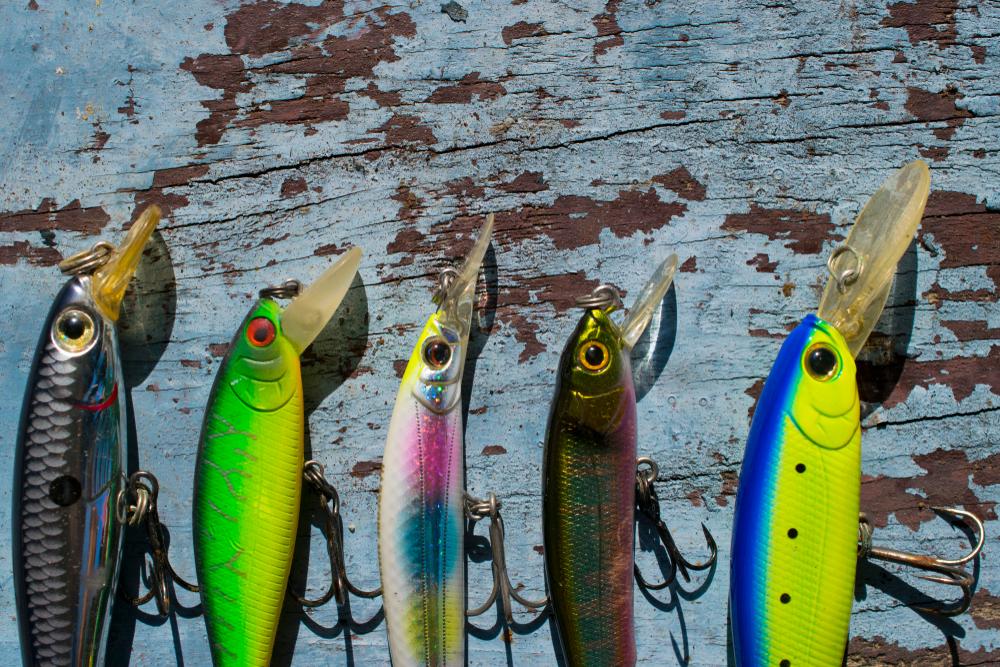
The principle behind active fishing is always to attract a fish with a potential food source and then hook them when they attack. This can be done in a few ways.
Often people learn to fish with live bait as just about any species of fish will bite. Most commonly you will see worms, crickets, crawfish, and minnows used for live bait. Simply attach a hook to the end of the line and then feed your live bait onto the hook.
With live bait, you can either attach a bobber and leave your bait in one spot to wiggle around, or you can cast and reel it in to create more movement. In addition to looking like a good meal, fish can smell the live bait in the water.
Also, live bait will commonly move even after on the hook. That motion will draw in fish.
The downside is that fish can sometimes pull the bait off of the hook before you can set it. This means rebaiting your hook from time to time. To figure out what type of bait to use, you can ask a local bait shop or just look at what food sources you see around your fishing spot.
- Lures
These are artificial baits designed to mimic real food sources. You have thousands of different types of lures available depending on where you are fishing and what species you are targeting.
Spinnerbaits are lures with a primary body and a small spoon attached. This is typically designed to mimic the shimmer you get from a minnow in the water.
Soft baits are flexible plastic baits typically designed to look and act like worms or minnows. They are fed onto hooks just like live bait. They are also my favorite type of artificial lures for bass fishing.
- Crankbaits
These are lures shaped like minnows. They often have two treble hooks and a bill on the front to cause the lure to dive deeper.
Spoons are one of the simplest lure types. It just consists of a metal spoon and a hook. Again, the shimmer looks like a minnow in the water.
If you are going after crappie, you cannot beat a jig. This is a soft rubber bait that looks more like a grub. Typically, it is dropped down from a boat and moved around by the angler to create motion.
Buzz baits are lures that are designed specifically to churn up the water as you reel them in. This action can often draw in fish from other areas.
All of this just scratches the surface of the lures you can use. Often, your best resource on which to use is your local fishing shop.
So here is my personal advice to catch more fish:
- Time does matter. Early in the morning and late in the evening is best. When there is less light, the fish cannot see you as easily. Yes, they can see you standing there. Also, before and after storms are good times to fish. The low barometric pressure created by storms makes fish stomachs expand causing them to feel hungry even if they just ate. If it is too hot, fish hide in deep water. If it is cold, they don’t move much at all. Mild weather is best.
- Go for structures. Fish like to hide around rocks, logs, and lilypads for a few reasons. There is less water movement, they feel safer, and they can ambush food sources.
- Don’t scare them off. Bright-colored clothing and loud noises will scare away fish.
- Be patient when setting your hook. If you jerk your rod when you feel that first nibble, you will likely jerk the hook out of the fish’s mouth. Wait just a moment, look for movement on your line, and then pull up firmly with your rod tip.
- Take your time bringing it in, rod tip up, watch for the jump, and get your net. Once you have the hook set, don’t rush things. Keeping the rod tip up will keep the line taught. Let the fish run for a minute to tire out and it won’t fight as hard. As aggressive fish come to the surface, they sometimes jump to shake the hook loose. This is a good time to give it a little slack. Finally, grab the net when you get it close.
As you can see, you have lots of options to bring in some monster fish. To decide which is best, you should look at your personal situation. Where will you be fishing? What species will you target? What difficulty level do you desire?
Largely this decision is just a personal preference. I would suggest that you try out a few different rigs before you buy one for yourself. Often, this will make the decision pretty easy.
In the end, all of these options have their place. The best thing that you can do is get out there and get some practice. It has taken years of experience for me to get to the point that I can cast a line and be confident that I will bring in a fish.
The sooner you get started, the sooner you will achieve that same confidence.
As a beginner, what are the issues you have to deal with? Share them with us in the comments section!
Up Next:
-

 Do It Yourself7 months ago
Do It Yourself7 months agoParacord Projects | 36 Cool Paracord Ideas For Your Paracord Survival Projects
-

 Do It Yourself9 months ago
Do It Yourself9 months agoHow To Make Paracord Survival Bracelets | DIY Survival Prepping
-

 Do It Yourself9 months ago
Do It Yourself9 months ago21 Home Remedies For Toothache Pain Relief
-

 Do It Yourself10 months ago
Do It Yourself10 months agoSurvival DIY: How To Melt Aluminum Cans For Casting
-

 Exports8 months ago
Exports8 months agoAre Switchblades Legal? Knife Laws By State

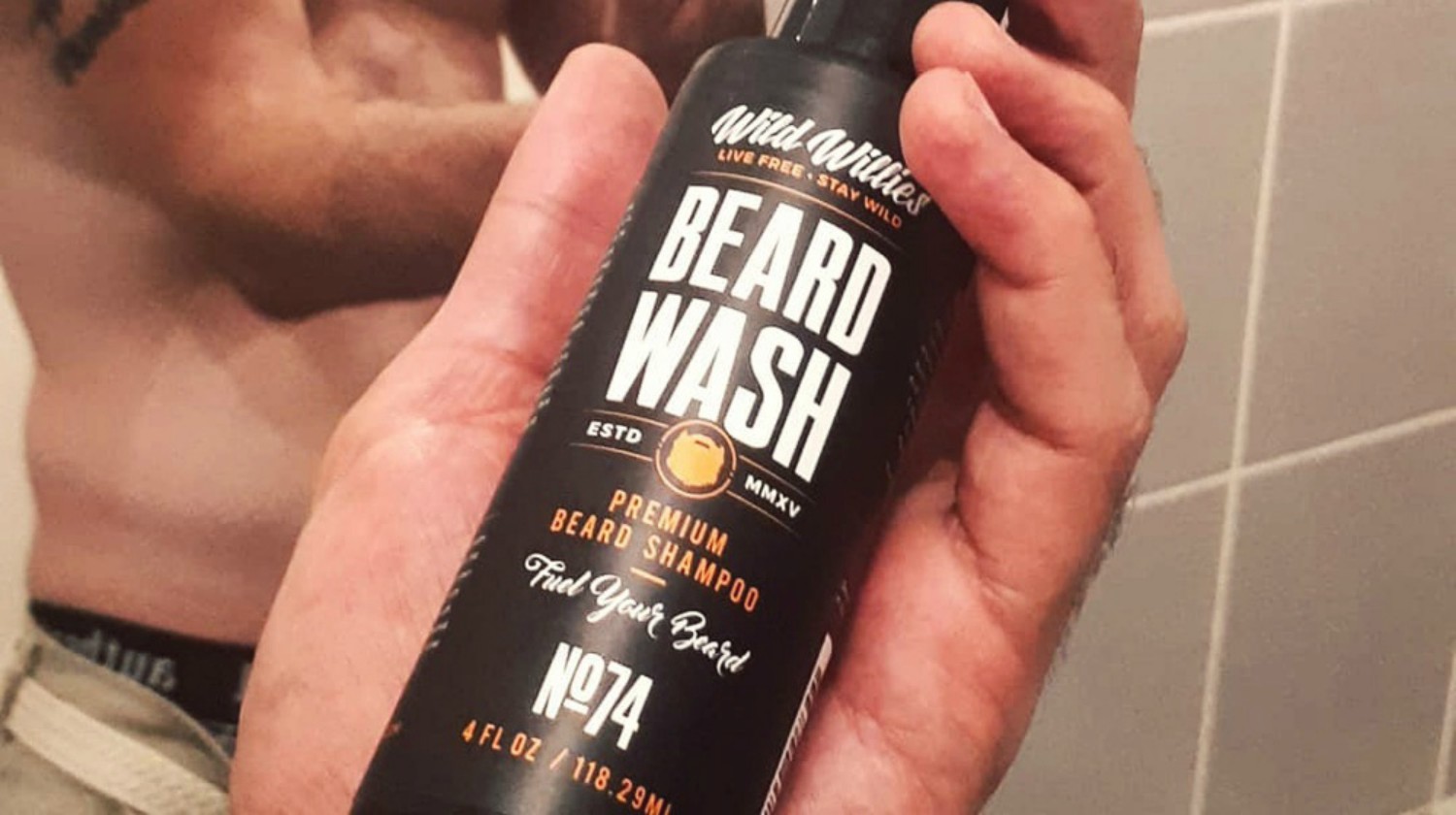
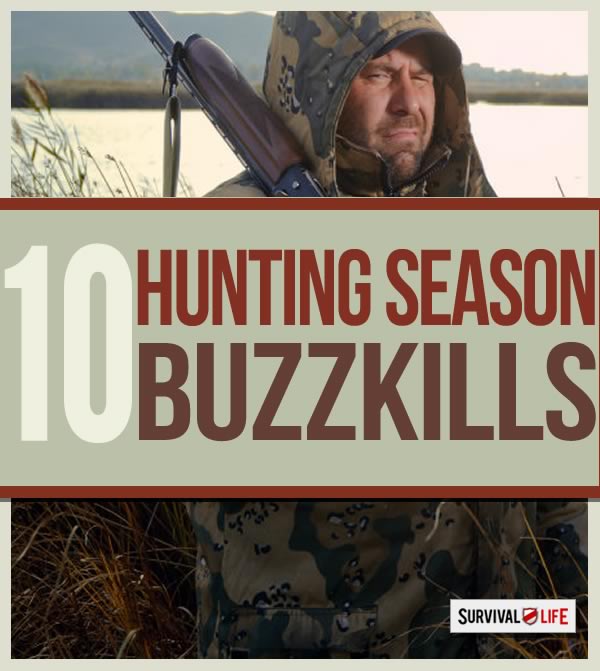





Pingback: 7 PVC Pipes Projects For Survival Uses – The Self-Sufficient Life
Pingback: 7 PVC Pipes Projects For Survival Uses - Cooking in Quarantine
Pingback: 7 PVC Pipes Projects For Survival Uses – surviveurself
Pingback: How To Make Your Own Ice Fishing Lures: A Step-by-Step Tutorial – The Self-Sufficient Life
Pingback: How To Make Ice Fishing Jigs | Step-by-Step Tutorial | Survival Go Bag
Pingback: How To Make Ice Fishing Jigs | Step-by-Step Tutorial - Primal Survival
Pingback: How To Make Your Own Ice Fishing Lures: A Step-by-Step Tutorial – surviveurself
Pingback: How To Make Ice Fishing Jigs | Step-by-Step Tutorial – Survival Blog
Pingback: Ice Fishing 101 | Everything You Need To Know - Primal Survival
Pingback: 7 PVC Pipes Projects For Survival Uses | Survival Go Bag
Pingback: Ice Fishing 101 | Everything You Need To Know | Survival Go Bag
Pingback: 15 Fishing Hacks for the Everyday Fisherman [PODCAST] | Best Go Bag
Pingback: 7 PVC Pipes Projects For Survival Uses – brandname
Pingback: 7 PVC Pipes Projects For Survival Uses | Tactical Protect
Pingback: Training Your Fish: Teaching Them to Respond to Feeding Times and Aquarium Activities | Wise Whisker Mentor